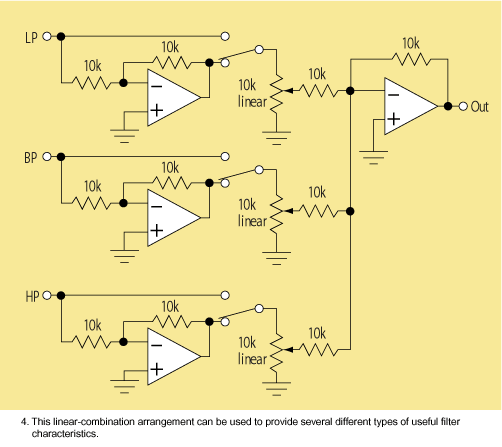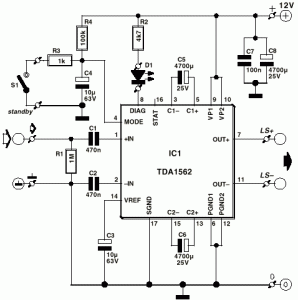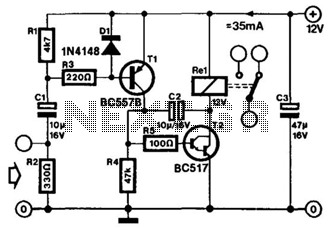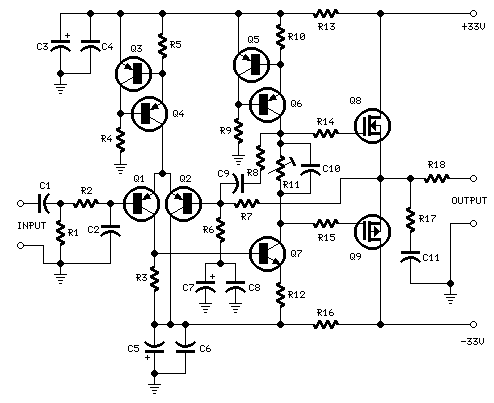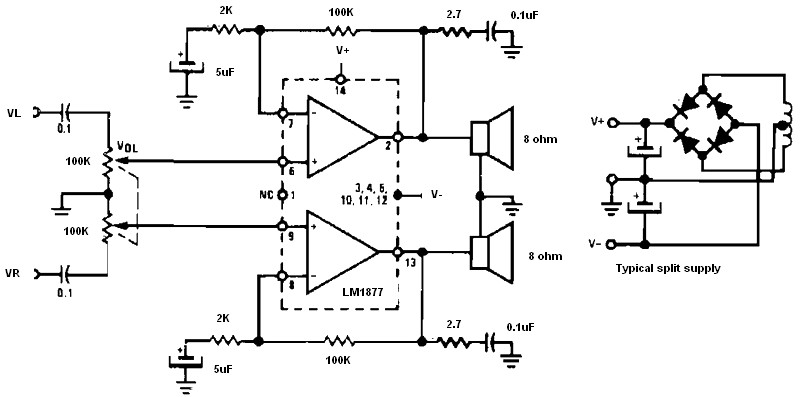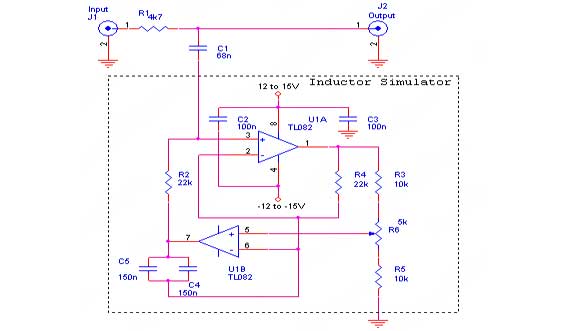
Precise audio clipper
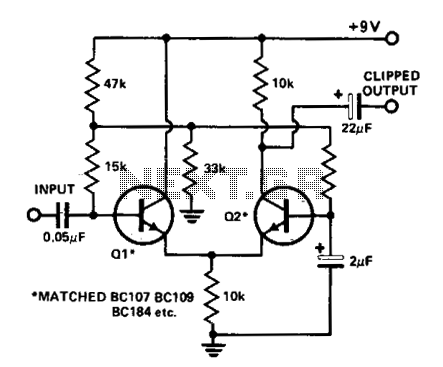
A differential amplifier serves as an effective audio clipper, capable of delivering precise and symmetrical clipping. The circuit presented begins clipping at an input voltage of 100 mV, with the output starting to clip at ±3 V. For optimal symmetrical clipping, it is essential to match transistors Q7 and Q2. However, if some asymmetry is acceptable, this matching may not be required.
A differential amplifier utilized as an audio clipper operates by comparing two input signals and amplifying the difference between them. In this configuration, the circuit is designed to clip audio signals when they exceed a certain threshold, ensuring that the output remains within defined limits. The specified input clipping threshold of 100 mV indicates the minimum voltage level at which the amplifier will begin to limit the output signal, effectively preventing distortion in the audio signal at higher amplitudes.
The output clipping level of ±3 V signifies the maximum voltage range that the amplifier can output before the signal is clipped. This clipping action is crucial in audio applications where maintaining signal integrity is important, as it prevents the signal from exceeding the capabilities of downstream components or causing distortion that could affect sound quality.
The matching of transistors Q7 and Q2 is a critical aspect of achieving symmetrical clipping. When both transistors are matched in terms of characteristics such as gain and threshold voltage, the clipping behavior becomes more uniform, producing a balanced output waveform. This symmetry is particularly important in high-fidelity audio applications where signal quality is paramount. If the application allows for some degree of asymmetry in the clipping behavior, the requirement for matching these transistors can be relaxed, simplifying the design process.
In summary, the differential amplifier circuit described provides an efficient means of clipping audio signals, with specific attention to input and output thresholds and the importance of transistor matching for achieving optimal performance.A differential amplifier makes an excellent audio clipper and can provide precise, symmetrical clipping. The circuit shown commences clipping at an input of 100 mV. The output commences clipping at ±3 V. Matching Q7 and Q2 is necessary for good symmetrical clipping. (If some asymmetry can be tolerated, this need not be done.) 🔗 External reference
A differential amplifier utilized as an audio clipper operates by comparing two input signals and amplifying the difference between them. In this configuration, the circuit is designed to clip audio signals when they exceed a certain threshold, ensuring that the output remains within defined limits. The specified input clipping threshold of 100 mV indicates the minimum voltage level at which the amplifier will begin to limit the output signal, effectively preventing distortion in the audio signal at higher amplitudes.
The output clipping level of ±3 V signifies the maximum voltage range that the amplifier can output before the signal is clipped. This clipping action is crucial in audio applications where maintaining signal integrity is important, as it prevents the signal from exceeding the capabilities of downstream components or causing distortion that could affect sound quality.
The matching of transistors Q7 and Q2 is a critical aspect of achieving symmetrical clipping. When both transistors are matched in terms of characteristics such as gain and threshold voltage, the clipping behavior becomes more uniform, producing a balanced output waveform. This symmetry is particularly important in high-fidelity audio applications where signal quality is paramount. If the application allows for some degree of asymmetry in the clipping behavior, the requirement for matching these transistors can be relaxed, simplifying the design process.
In summary, the differential amplifier circuit described provides an efficient means of clipping audio signals, with specific attention to input and output thresholds and the importance of transistor matching for achieving optimal performance.A differential amplifier makes an excellent audio clipper and can provide precise, symmetrical clipping. The circuit shown commences clipping at an input of 100 mV. The output commences clipping at ±3 V. Matching Q7 and Q2 is necessary for good symmetrical clipping. (If some asymmetry can be tolerated, this need not be done.) 🔗 External reference
